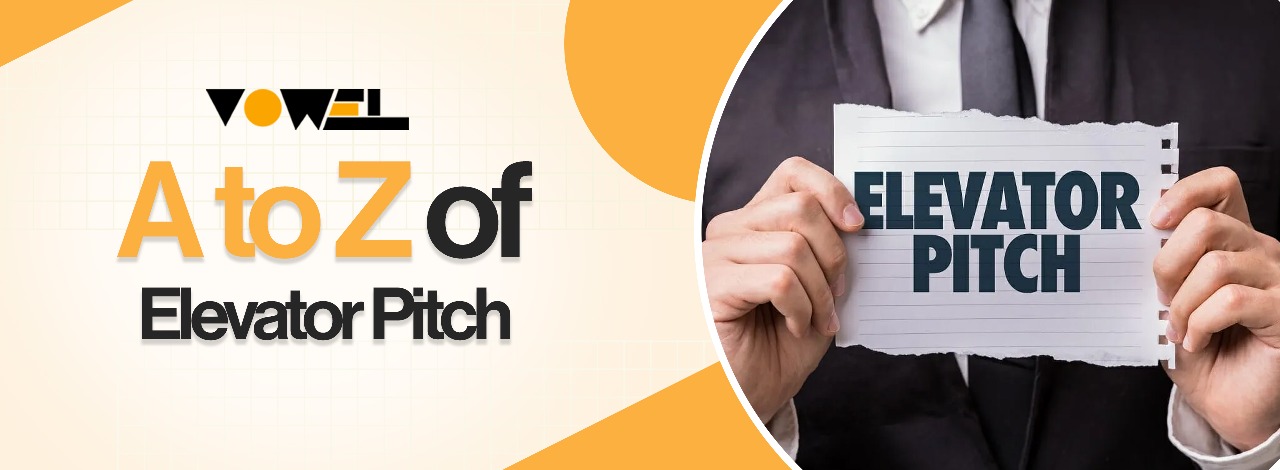

A to Z of Elevator Pitch
In today's fast-paced professional world, having a compelling elevator pitch is no longer optional---it's essential. Whether you're a startup founder, job seeker, freelancer, or corporate professional, your elevator pitch can open doors, spark curiosity, and drive meaningful opportunities.
An elevator pitch is a concise, persuasive speech that introduces you, your idea, or your business in the time it takes to ride an elevator---usually 30 to 60 seconds. But crafting a pitch that is clear, engaging, and effective is an art that takes more than just knowing what to say. Here's the A to Z of elevator pitching---everything you need to know to make those crucial seconds count.
A -- Attention
Your first line must grab attention. Think of it as your headline. A surprising fact, a bold statement, or a compelling question can work wonders. If you don't hook your listener within the first few seconds, the rest of your pitch might be ignored.

B -- Brevity
An elevator pitch is short for a reason. Time is precious, and being able to communicate your value concisely shows professionalism. Aim to deliver your message in 60 seconds or less.
C -- Clarity
Avoid jargon and complex terminology. The clearer your message, the more likely your listener will understand and remember it. Focus on delivering a single, strong idea.
D -- Differentiation
What makes you or your offering different from others? Highlight your unique selling proposition (USP). Make it obvious why someone should choose you over the competition.
E -- Emotion
Facts tell, but stories sell. Add a bit of emotion, personal story, or relatable problem to create a connection. Emotional resonance makes your pitch memorable.
F -- Focus
Keep your pitch focused on your objective---whether it's to get a meeting, generate interest, or close a deal. Don't try to cover everything. Pick one clear goal.
G -- Goal-Oriented
Have a call to action in mind. What do you want your listener to do next? Ask for a follow-up, a business card, or even just a quick opinion. Guide them toward your goal.
H -- Hook
Your hook is the line that intrigues your audience. It should hint at a solution or outcome that makes them want to hear more. For example, "I help small businesses triple their revenue in six months."
I -- Introduction
Introduce yourself confidently. State your name, role, and the essence of what you do. Make it conversational and natural, not like a formal announcement.
J -- Just Enough Detail
Give enough information to spark interest, not overwhelm. Think of your pitch as a teaser---not a trailer. Leave room for curiosity.
K -- Know Your Audience
Tailor your pitch to the person you're talking to. Are they a potential investor, employer, or collaborator? Customize your tone, keywords, and examples to suit their perspective.
L -- Language Matters
Use active, energetic language that conveys confidence and purpose. Replace weak verbs with strong ones. For example, say "I lead marketing teams" instead of "I am involved in marketing."
M -- Memorability
Use storytelling, analogies, or catchy phrases to make your pitch stick in the listener's mind. Even if they forget your name, they'll remember the story or hook.
N -- Nonverbal Cues
Your body language, tone, and facial expressions matter just as much as your words. Maintain eye contact, smile, and speak with confidence and enthusiasm.

O -- Opening Line
Craft a strong and flexible opening line. For example: "I help businesses solve their biggest operational headaches through AI automation." This gives clarity and invites further questions.
P -- Problem-Solution Structure
Highlight a specific problem and how you solve it. People care more about solutions than services. For instance, "Most people struggle to grow their social media. I offer content strategies that triple their engagement in 30 days."
Q -- Questions Anticipation
Be prepared for immediate follow-up questions. Know your numbers, examples, and next steps so you're not caught off guard.
R -- Rehearse Without Sounding Scripted
Practice your pitch regularly so it becomes second nature. But don't memorize it word-for-word---it should sound spontaneous and conversational, not robotic.
S -- Simplicity
Strip your pitch down to its core. Simple pitches are more impactful because they're easier to understand, remember, and repeat.
T -- Timing
Always be aware of your timing. A great pitch respects the listener's attention span. If they're engaged and ask to hear more, you can elaborate---but don't overextend.
U -- Uniqueness
Inject personality into your pitch. A touch of humor, personal insight, or authenticity can make you stand out in a sea of sameness.
V -- Visual Language
Use vivid words or metaphors to paint a picture. Saying "We're like Uber for healthcare" gives your audience an instant mental image and better context.
W -- Why Should They Care?
Always ask yourself: "What's in it for them?" If your pitch doesn't offer value or solve a problem, your listener won't be interested.
X -- X-Factor
Highlight your standout quality---what makes your solution irreplaceable or your skill set unique. Your X-factor is your secret weapon.
Y -- Your Brand Voice
Your elevator pitch should reflect your personal or business brand voice. Whether it's professional, quirky, innovative, or bold---consistency matters.
Z -- Zero-In on the Outcome
End with a punch. Whether it's a compelling statistic, a strong question, or a bold ask, finish with something that sticks. For example, "In just three months, I helped a startup grow from 500 to 50,000 users---want to know how?"

Final Word
Mastering the elevator pitch is one of the most valuable communication tools in your professional toolkit. It's not just about selling a product or service---it's about selling belief, potential, and confidence in your value.
The best pitches are brief but unforgettable, structured yet authentic, and persuasive without being pushy. With the A to Z approach, you'll have a pitch that works for any situation---from networking events and interviews to investor meetings and spontaneous encounters.
Frequently Asked Questions
What is an elevator pitch?
An elevator pitch is a brief, persuasive speech---usually under 60 seconds---that introduces you, your idea, or your business clearly and compellingly.
How long should an ideal elevator pitch be?
Your pitch should ideally be between 30 to 60 seconds---long enough to be informative but short enough to hold attention.
What should be included in an elevator pitch?
It should include who you are, what you do, the problem you solve, your unique value, and a clear call to action or goal.
How can I make my pitch stand out?
Use a strong opening hook, inject personality, and focus on emotional connection or a vivid example that sticks in the listener's mind.
When should I use an elevator pitch?
Use it during networking events, interviews, investor meetings, chance encounters, or anytime you need to introduce yourself quickly and effectively.

